A new rendering has been revealed for 335 Bond Street, a 14-story residential building under construction in Gowanus, Brooklyn. Designed by Studio V Architecture and developed by E&M Realty, the 155-foot-tall structure is planned to span 77,383 square feet and yield 73 units with an average scope of 932 square feet, as well as 4,644 square feet of manufacturing space, 4,633 square feet of commercial space, and a 30-foot-long rear yard. The residential component will include affordable housing, though the exact number of affordable units has yet to be disclosed. Titanium Construction Services is the general contractor for the project, which is located directly west of the Gowanus Canal by the intersection of Carroll and Bond Streets.
The exterior rendering is oriented east and shows light-colored façade featuring a prominent use of arched openings, the tallest of which spans two floors at the western corner of the superstructure. An open-air void within leads to a raised entry courtyard flanked by multiple one-story arches. The rest of the first level has a more conventional design with elevated windows above the sidewalk along Carroll Street, and outdoor staircases along Bond Street leading up to the entrance.
The rest of the building’s fenestration is composed of both rectangular and arched floor-to-ceiling windows with white horizontal mullions. A couple of setbacks are seen on the upper levels and are lined with glass railings and greenery, indicating outdoor terrace space for residents. The entire façade utilizes an even distribution of brick cladding.
A lot has changed since our last update in early July, when the ground-floor slab of the former low-rise structure still remained on the site. Alba Services Inc. was in charge of the demolition process. Photos of the site today show a number of excavators and pilings machines busily prepping the earth for the reinforced concrete foundation.
335 Bond Street’s anticipated completion date is slated for the summer of 2025, as noted on site.
Subscribe to YIMBY’s daily e-mail
Follow YIMBYgram for real-time photo updates
Like YIMBY on Facebook
Follow YIMBY’s Twitter for the latest in YIMBYnews


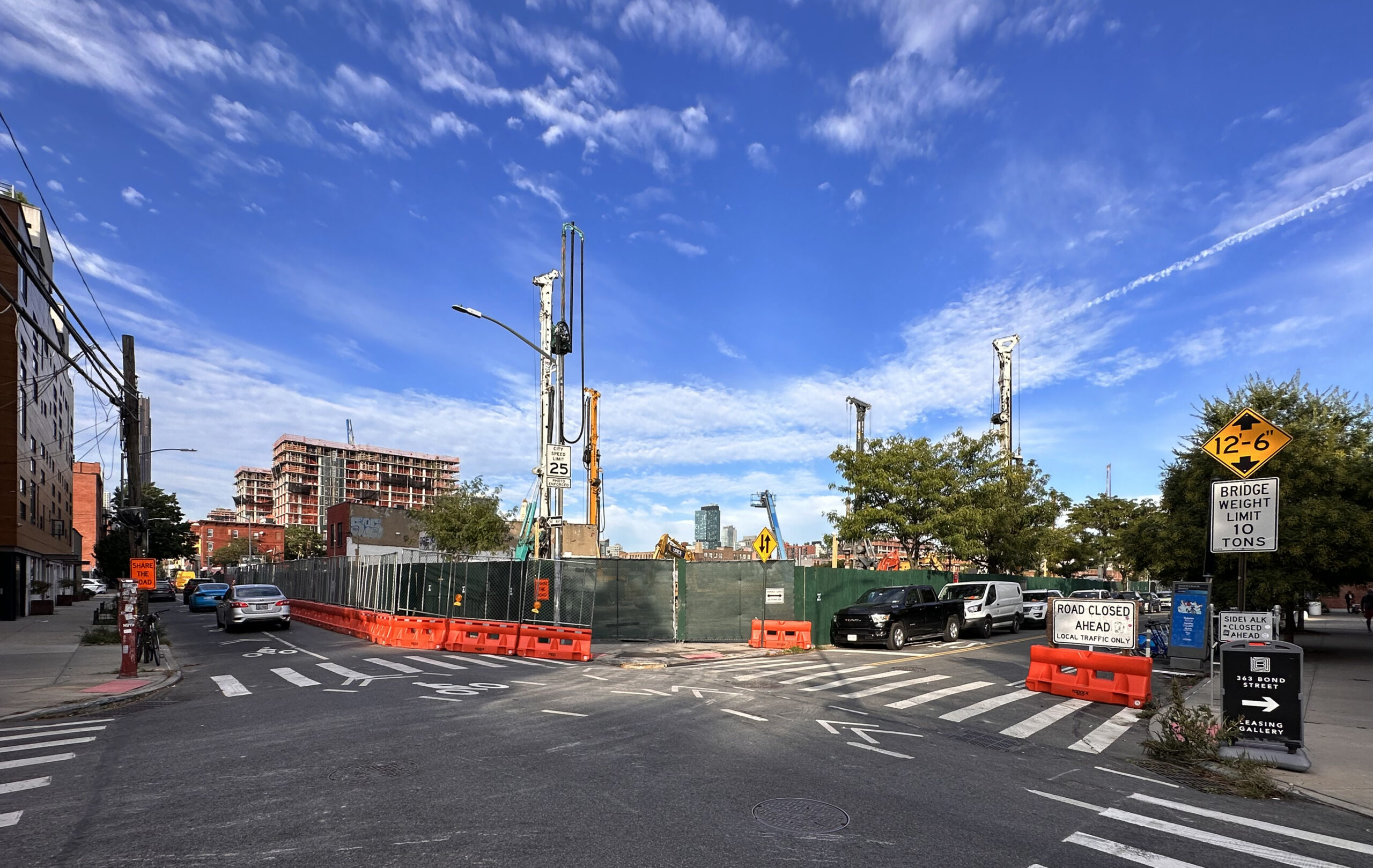

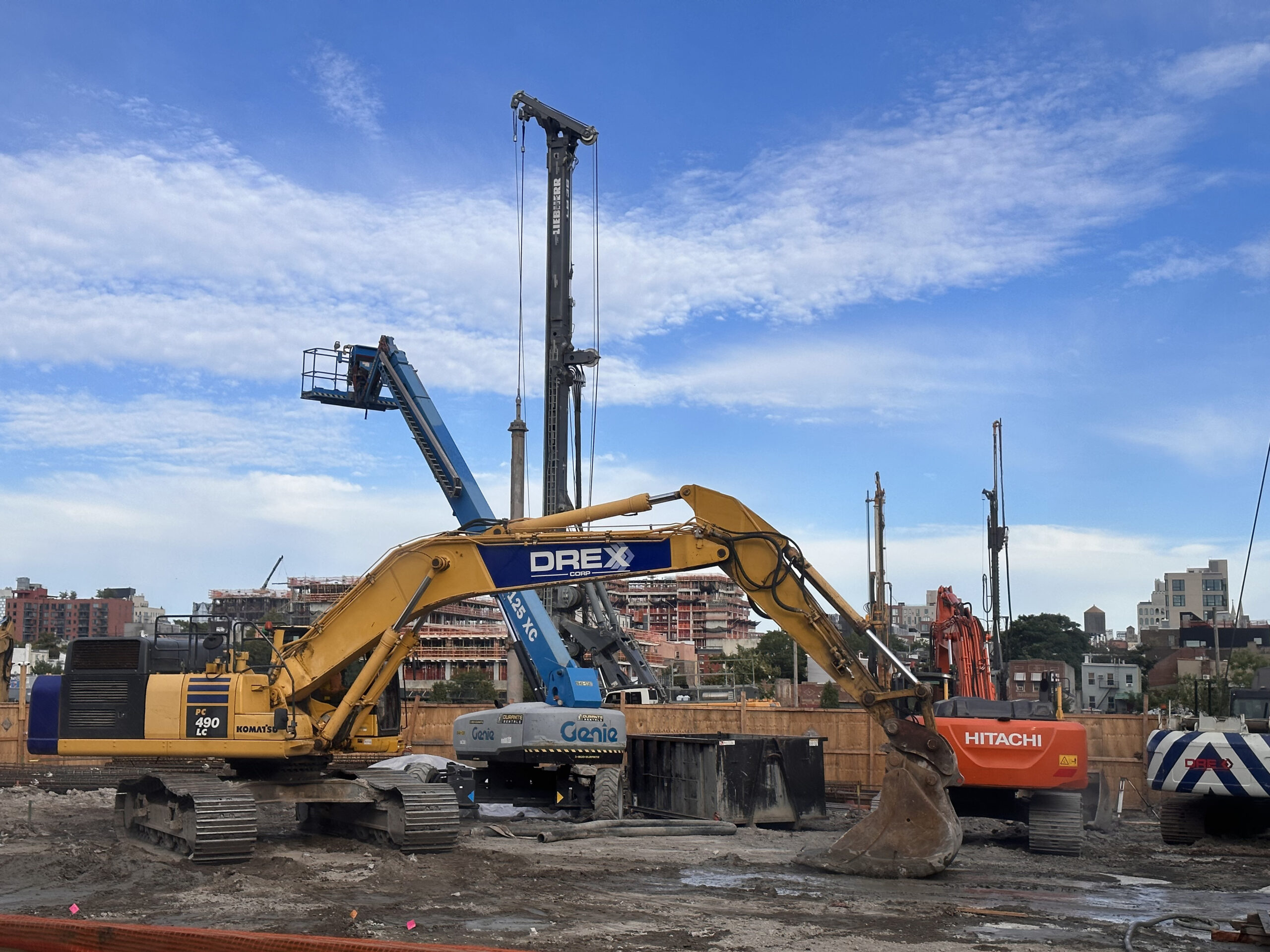
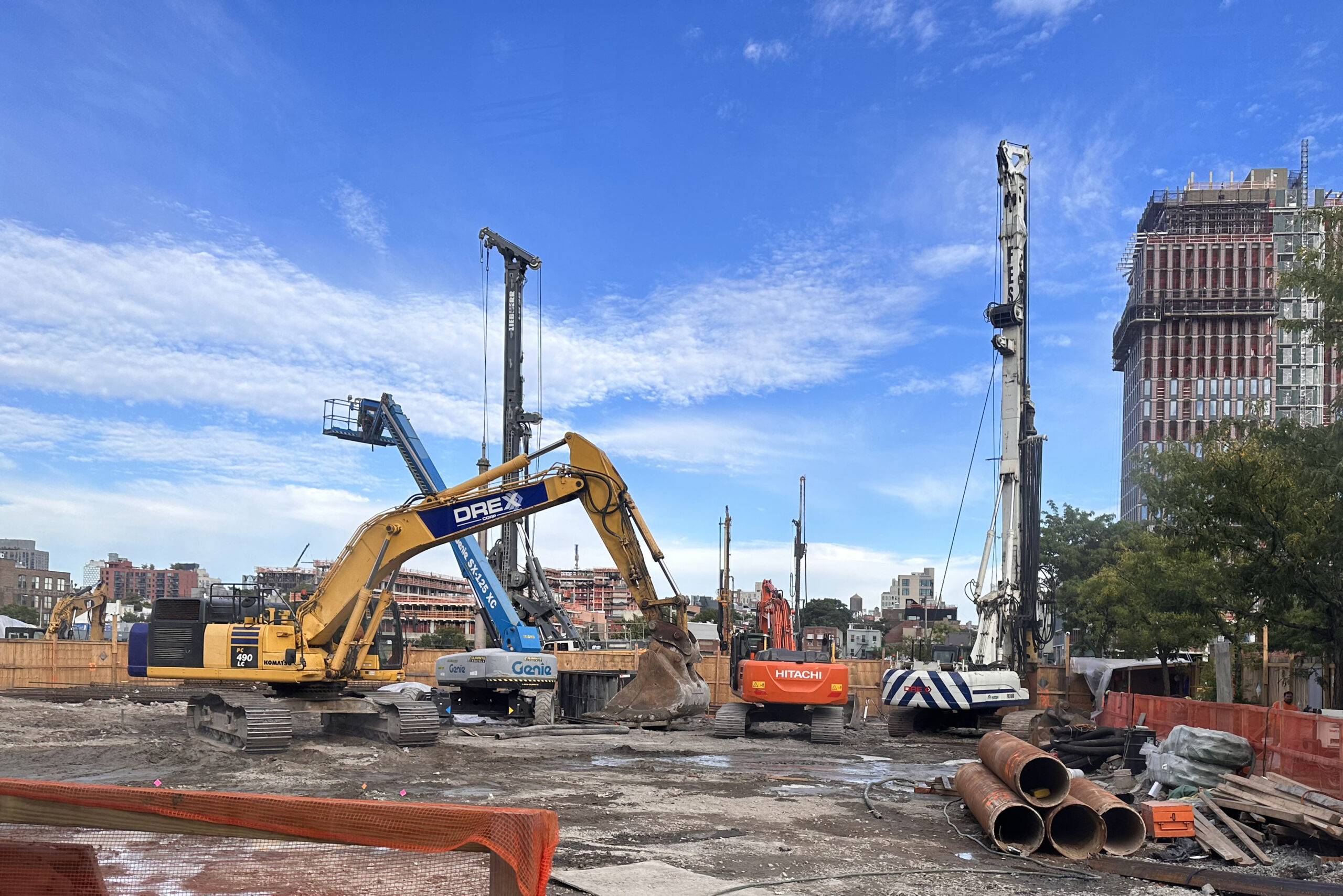
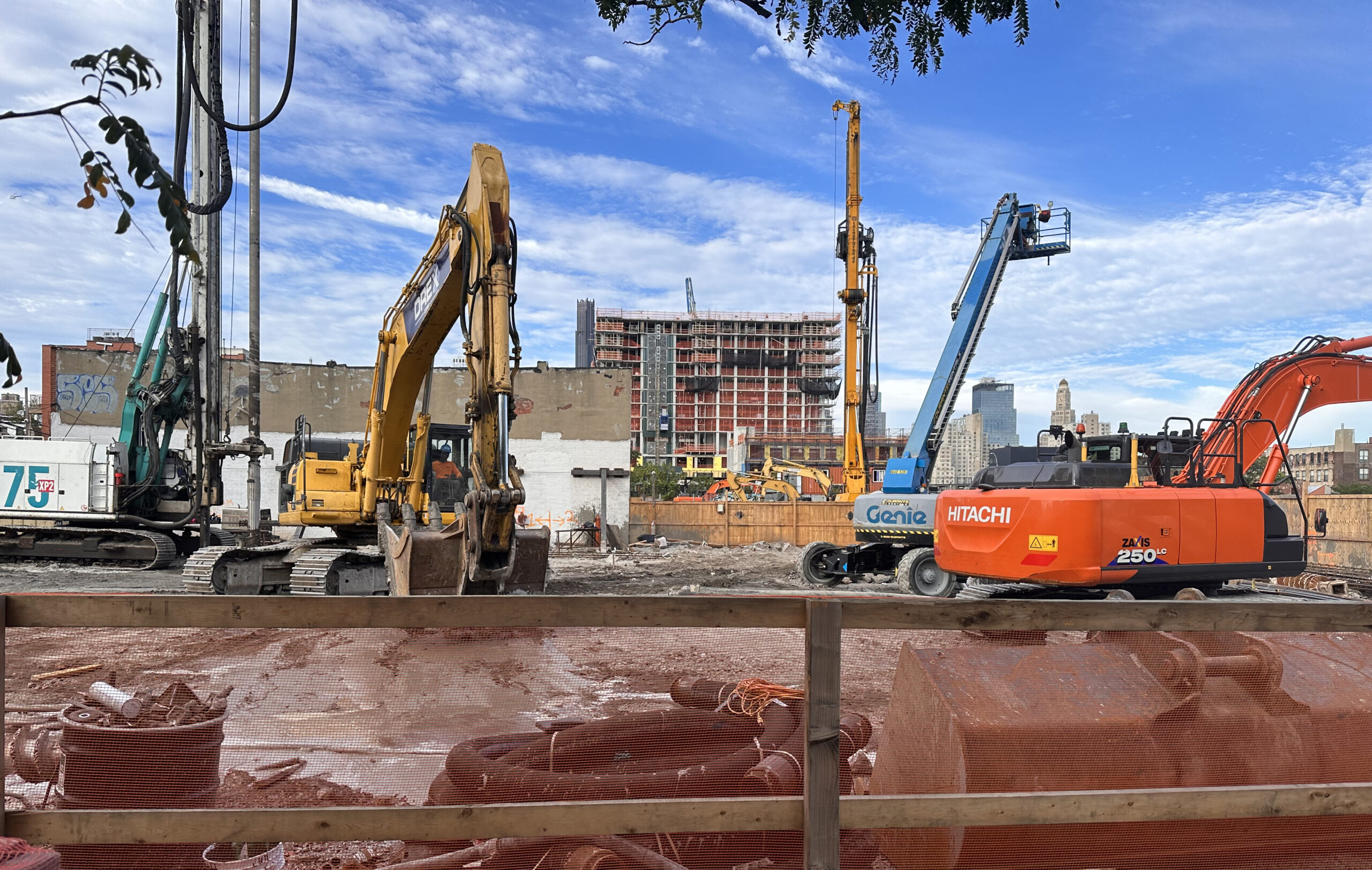
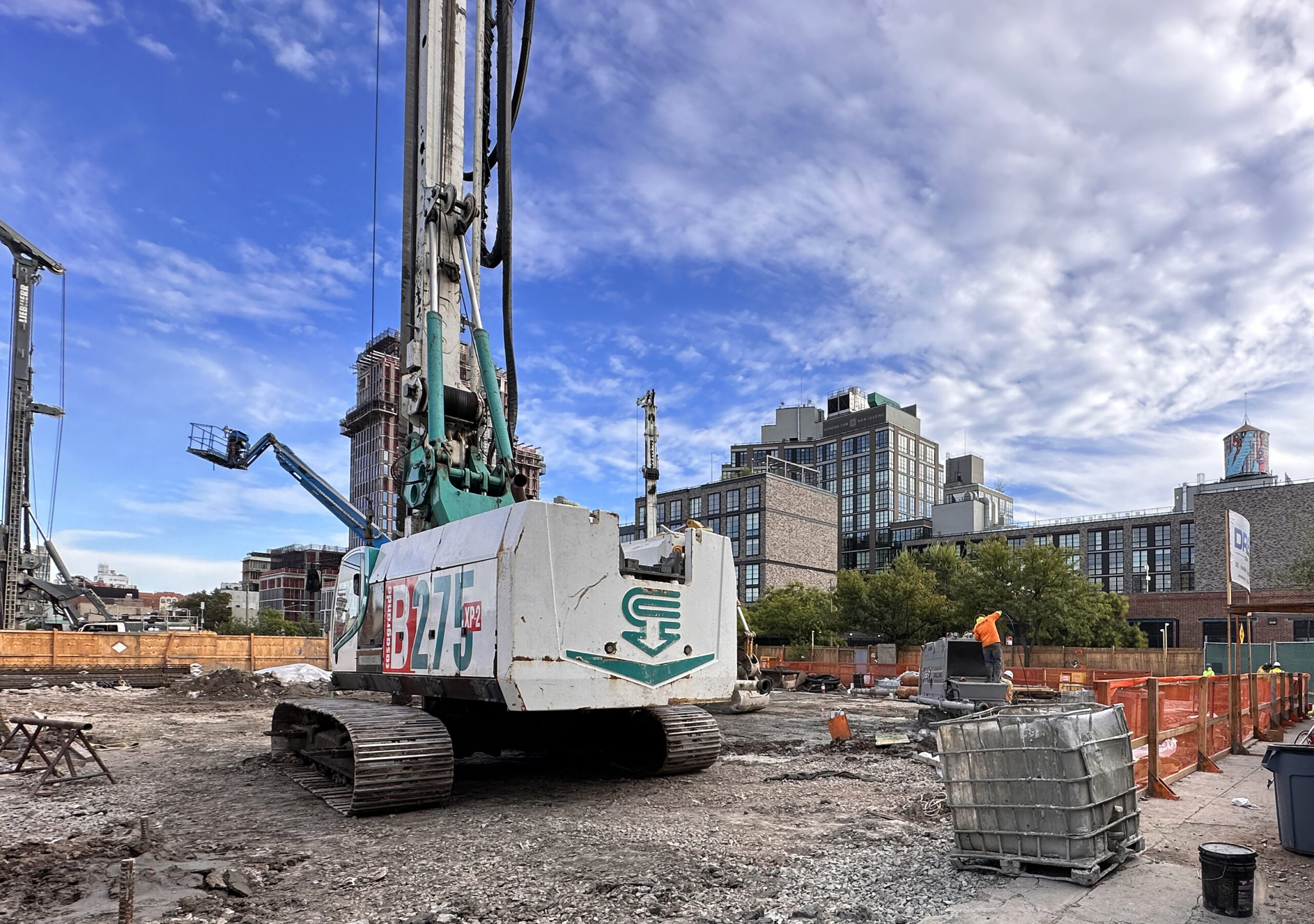
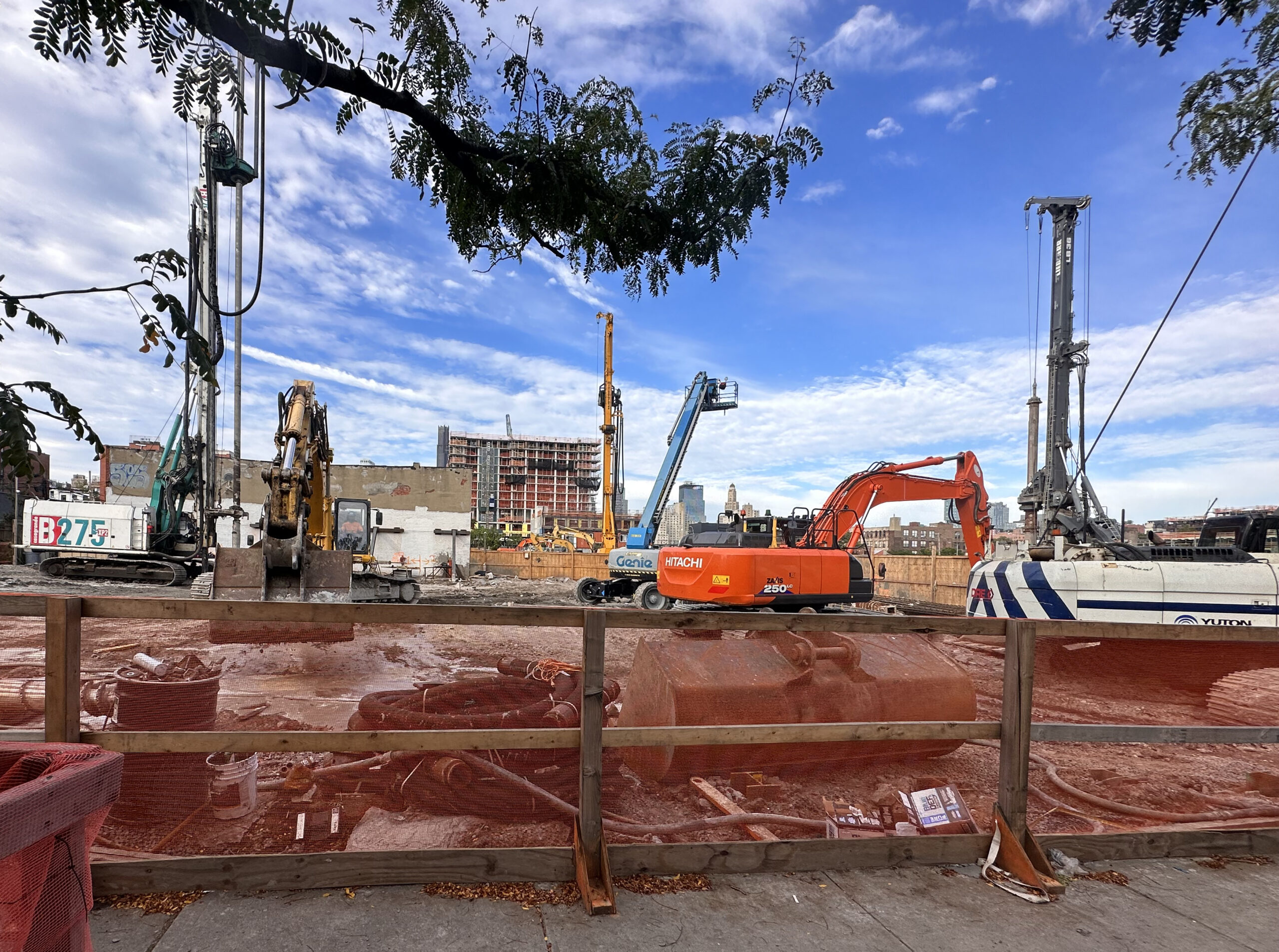




There’d be the beautiful arched openings and look at that exterior design of each floor above the street level. A superstructure has been done by the tallest of which spans two floors, a view of this is knowing showed through its prominent corner. All I said was answering the market! Thanks to Michael Young.
It’s a little bit weird, and that’s very good.
What’s Happening in Gowanus?
The Canal
The Gowanus Canal Was Designated a “Superfund Site”
For over a century, the banks of the Gowanus Canal were line with industry and manufacturing companies, which released their toxic waste into the canal water as well into the ground. In 2010, the federal government identified the Gowanus Canal as one of the most toxic waterways in the entire country. It’s filled with toxins that pose serious public health risks. As a result, it was designated a “Superfund” site, and in 2020, the Environmental Protection Agency began a $1.5 billion cleanup of the canal.
The Land
The Gowanus Neighborhood Has Been Rezoned
In 2021, 82 blocks in Gowanus were changed from mainly industrial use to allowing residential development. The existing industrial buildings being demolished in the neighborhood will soon be replaced by dozens of apartment towers reaching up to 30 stories tall.
Most of the Rezoned Land is Highly Toxic
The vast majority of development sites in Gowanus (see map, below) are filled with cancer-causing toxins due to a century of industrial use, and have been classified by NY State as “Brownfield sites.” Some have toxins as deep as 150 feet.
The Infrastructure
Sewage Frequently Flows Into the Canal
During heavy rains, raw sewage flows into the canal because it exceeds the current sewer system’s capacity. As a result, the EPA has demanded that the City build two enormous “retention” tanks to keep excess sewage from going into the canal.
What’s The Problem?
The Land is Not Being Cleaned Up Fully, Leaving Toxins in the Soil
All of these sites need to be cleaned up before residential buildings can be built. State law requires they be cleaned to “pre-disposal conditions”—as they were before industrial poisoning. However, this is NOT happening. For instance, at some sites, where toxins reach as deep as 150 feet, the State is only calling for developers to clean less than the top 8 feet of contaminated soil.
Toxins Left in the Soil Can Enter Buildings And Threaten Future Residents’ Health
The State itself acknowledges that when certain toxins (“volatile organic compounds” or VOCs) are left in the soil, they can “move into buildings and affect the indoor air quality.”
Rather than remove them entirely, the State has decided that on the development sites, these toxins will be covered, or “capped,” with a slab of concrete. This method of dealing with toxic land, known as creating a “vapor intrusion barrier,” is very risky, and is so unreliable that these sites must be monitored every year, in perpetuity, to ensure that dangerous vapors haven’t penetrated people’s residences.
The Most Deeply-Affordable Housing Is Planned for the Most Seriously Toxic Site
Some of the worst contamination can be found at “Public Place,” a City-owned plot at the corner of Smith and Fifth Streets which for decades housed a manufactured gas plant that created waste known as “coal tar.” Exposure to coal tar has been linked to a variety of cancers. Coal tar at this site has been found to a depth of 150 feet.
The cleanup proposed for this site is woefully inadequate, and only the top 8 feet of soil will be cleaned. It is also the only site in the entire rezone where 100% of the 950 apartments target lower incomes, including units for unhoused individuals and seniors. A school has also been proposed for this site.
Placing the lowest-income residents in danger in this way raises Environmental Justice concerns.
Toxins Are Not Confined To Their Original Sites and Threaten the Health of Existing and Future Residents
Large “plumes” of migrating carcinogenic coal tar have already been found far from their original site in Gowanus, and with flooding and rising groundwater levels from climate change, these and other carcinogens can wind up underneath existing homes and intrude into them.
Fumes from the Toxic Construction Sites Pose a Danger to the Community
The disturbance of the land at these toxic construction sites has caused air monitors to be set off by toxic fumes reaching dangerously high levels, with the community not notified and only discovered after kids in the neighboring playground smelled it and reported it to our electeds.
The Gowanus Canal will be Re-Contaminated With Toxins
Without a full cleanup, toxins from the sites surrounding the canal will seep right back into the canal and re-contaminate it, thereby not only wasting $1.5 billion in taxpayer dollars, but also returning the canal to its dangerously toxic state.
Sewage Retention Tanks Are Not Being Built, and Sewage will continue to flow into the canal—and into our homes
The City is not following the EPA’s timeline to build the required retention tanks, and at this point says that they won’t be complete until after 2030. And the retention tanks are only meant to deal with the current number of residents in the community; they don’t take into account the additional sewage that will be produced by 20,000 planned future residents.
Without the required retention tanks, and given increases in rainfall as a result of climate change, sewage will (and has) backed up into people’s homes.